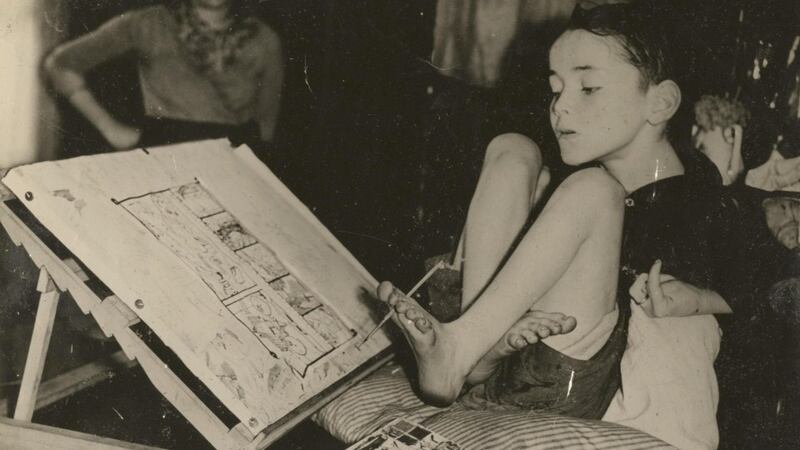Reading Christy Brown's Down All the Days as a younger woman gave me the ambition to become a writer. Like Brown I have cerebral palsy. The universality of his writing renders a sense of joy in the fact that he is Irish.
I’m not alone in my regard for his work. Many within the disability community have a particular love for Brown and our other idols. Many of them lived in times when their impairments were things to be hidden, ashamed of or written out of history. Yet their legacy lives on. Our collective history, as Irish disabled people, is documented through Christy Brown’s work and biography.
So it was with delight that I followed the story of the Little Museum of Dublin, the National Library of Ireland and Direct Medical buying an archive of Brown's work – a collection of sketches, paintings, poems, letters and personal effects – at an auction at Bonhams in 2013. It was correctly described as a gift for the nation. When the opening of the Dear Christy exhibition was announced it was exciting. Then reality hit. The Little Museum operates from a Georgian building on St Stephen's Green, a "protected structure". The Local Government (Planning and Development) Act 1999 requires councils to list certain buildings for protection, meaning they cannot be significantly altered. As a result the museum is inaccessible to wheelchair users.

It is right to preserve great architecture and design, but should these buildings continue to be used as private galleries or museums? To me it seems elitist to revere buildings to the point of excluding a section of the population from them.
Christy Brown would probably have been raging at this farce. To me it sends a clear message that it is acceptable to allow some people in and to exclude others. It is a sad irony that the Little Museum and its partners are celebrating a wheelchair-using artist yet wheelchair users can do no more than browse the catalogue online.
It’s important to note that the Little Museum of Dublin is the tenant of this building – it is owned by Dublin City Council – and does not make the rules about access.
The museum’s director, Trevor White, says, “We sincerely want the museum to become universally accessible, and we are working with our landlord to address this.”
But the exhibition is likely to be long gone by the time that conversation ends. The atmosphere and the sharing of opinions are central to the experience of any exhibition. Mobility-impaired people will be unable to engage with this important work in these ways.
Over the past 10 years many venues have moved towards universal access. In the case of this exhibition an audience of central importance is being ignored. It is a missed opportunity for diversity and sharing. The possibility for cultural and political dialogue around this exhibition would have been powerful.
On this occasion disabled people don't seem to matter. These transgressions are not incidental or accidental. If there's a climate of disrespect and exclusion they become the norm. It's hard to feel any sense of pride or citizenship living in this country when you have a disability. Seeing an exhibition like Dear Christy would have put a smile on our faces.
Dear Christy is at the Little Museum of Dublin (15 St Stephen's Green, Dublin 2) until August 2nd; littlemuseum.ie









